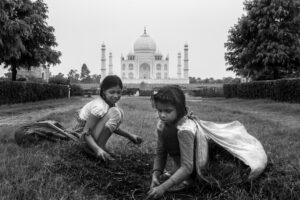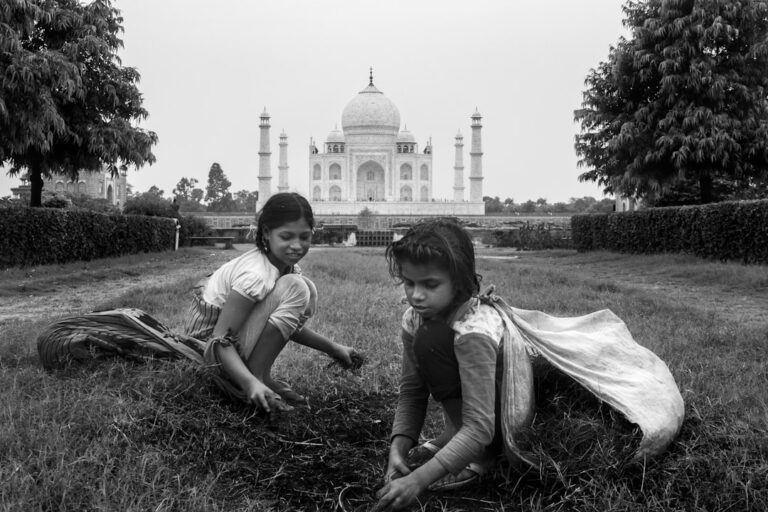The Varna system, a foundational aspect of ancient Indian society, has its roots in the Vedic texts, particularly the Rigveda, which dates back to around 1500 BCE. The term “Varna” itself translates to “color” or “class,” and it is believed that the original classification was based on the perceived qualities and roles of individuals within society rather than rigid hereditary lines. The earliest references to the Varna system describe a division of labor that was essential for the functioning of a complex society.
This classification was not merely social but also spiritual, as it intertwined with the religious beliefs and practices of the time. The emergence of the Varna system can be traced to the Indo-Aryan migration into the Indian subcontinent, where they encountered diverse cultures and social structures. The Vedic people, who were primarily pastoral and agrarian, began to organize themselves into distinct groups based on their occupations and roles in society.
The initial categorization was likely fluid, allowing for movement between groups based on merit and ability. However, over time, this system became more rigid, leading to the establishment of a hierarchical structure that would dominate Indian society for centuries.
Key Takeaways
- The Varna system originated in ancient India and was based on the division of society into four main social classes.
- The four varnas were Brahmins (priests and scholars), Kshatriyas (warriors and rulers), Vaishyas (traders and farmers), and Shudras (laborers and service providers).
- Each varna had specific occupations and roles within society, with Brahmins at the top and Shudras at the bottom of the social hierarchy.
- The Varna system had a significant impact on Indian society and culture, influencing social interactions, marriage, and religious practices.
- The Varna system has been criticized for perpetuating inequality and discrimination, and continues to be a controversial topic in modern India, with many advocating for its abolition.
The Four Varnas: Brahmins, Kshatriyas, Vaishyas, and Shudras
The Brahmins: Preservers of Wisdom and Knowledge
Brahmins, the priestly class, were tasked with performing rituals, preserving sacred knowledge, and guiding spiritual practices. They were seen as the custodians of wisdom and were often revered for their scholarly pursuits. Their role extended beyond mere religious duties; they were also educators and advisors to rulers.
The Kshatriyas: Warriors and Rulers
Kshatriyas, the warrior and ruling class, were responsible for governance and protection. They were expected to uphold justice and maintain order within society. This Varna included kings, warriors, and military leaders who played a crucial role in defending their territories and expanding their realms.
The Vaishyas and Shudras: Economic and Labor Contributors
Vaishyas represented the merchant and agricultural class, responsible for trade, agriculture, and economic development. They played a vital role in ensuring the flow of goods and resources, which contributed to the overall prosperity of society. Shudras, the lowest Varna in this hierarchy, were primarily laborers and service providers. Their duties included manual work and serving the other three Varnas. While they were essential for the functioning of society, they were often marginalized and faced significant social stigma.
Social Hierarchy and Occupation

The Varna system established a clear social hierarchy that dictated not only one’s occupation but also their social interactions and relationships. This hierarchy was deeply ingrained in the cultural fabric of Indian society, influencing everything from marriage practices to dietary restrictions.
Occupational roles within each Varna were often hereditary, leading to a rigid structure where individuals were born into their designated roles. For instance, a Brahmin’s child was expected to follow in their parent’s footsteps by pursuing education and religious duties. Similarly, Kshatriya children were groomed for leadership roles from an early age.
This hereditary aspect contributed to a lack of social mobility, as individuals found it challenging to break free from the constraints imposed by their birth. The implications of this hierarchy extended beyond mere occupation; it shaped interpersonal relationships and community dynamics. Interactions between different Varnas were often regulated by strict codes of conduct.
For example, it was generally frowned upon for members of higher Varnas to engage socially with those from lower Varnas. This segregation reinforced social divisions and perpetuated stereotypes that persisted for generations.
Impact on Society and Culture
The Varna system had profound implications for Indian society and culture, influencing various aspects of life including religion, art, literature, and philosophy. The religious texts that emerged during this period often reinforced the hierarchical structure by attributing divine significance to each Varna’s role. The belief that one’s Varna was determined by karma from past lives added a spiritual dimension to social stratification, making it difficult for individuals to challenge their assigned status.
Culturally, the Varna system fostered a rich tapestry of traditions and practices that reflected the diverse roles within society. Festivals, rituals, and ceremonies often highlighted the contributions of each Varna while simultaneously reinforcing their distinct identities. For instance, agricultural festivals celebrated by Vaishyas would differ significantly from those observed by Brahmins or Kshatriyas.
This diversity enriched Indian culture but also entrenched divisions that would persist over time. Moreover, literature from ancient India often depicted characters from various Varnas in ways that reinforced societal norms. Epics like the Mahabharata and Ramayana illustrated the virtues associated with each Varna while simultaneously portraying the consequences of transgressing these boundaries.
Such narratives served not only as entertainment but also as moral lessons that shaped societal values.
Criticisms and Controversies Surrounding the Varna System
Despite its historical significance, the Varna system has faced considerable criticism over the centuries. Many scholars argue that it institutionalized inequality and discrimination, particularly against Shudras and those outside the Varna framework altogether. The rigid caste hierarchy led to systemic oppression where individuals from lower Varnas faced social exclusion and limited access to resources such as education and employment opportunities.
The emergence of reform movements in the 19th and 20th centuries brought attention to these injustices. Leaders like B.R. Ambedkar advocated for the rights of marginalized communities and sought to dismantle the oppressive structures perpetuated by the Varna system.
Ambedkar himself was born into a Dalit family—historically considered outside the Varna system—and he experienced firsthand the discrimination that arose from this social stratification. Controversies surrounding the Varna system continue to resonate in contemporary discussions about caste-based discrimination in India. Critics argue that while legal frameworks have been established to promote equality, deeply ingrained societal attitudes often hinder progress.
Instances of caste-based violence and discrimination persist, highlighting the challenges faced by those seeking to transcend traditional boundaries.
Modern Perspectives on the Varna System

Reevaluating the Varna System’s Relevance
In contemporary India, perspectives on the Varna system are varied and complex. While some view it as an outdated relic of a bygone era that should be abolished entirely, others argue for its relevance in preserving cultural identity and heritage. The ongoing debate reflects broader discussions about social justice, equality, and cultural preservation in a rapidly changing society.
Towards a More Flexible and Inclusive System
Modern interpretations of the Varna system often emphasize its potential for flexibility rather than rigidity. Some scholars advocate for a reinterpretation that allows individuals to define their roles based on merit rather than birthright. This perspective aligns with contemporary values of individualism and personal agency while acknowledging historical injustices.
Challenging Traditional Norms and Advocating for Change
Additionally, there is a growing movement among younger generations to challenge traditional norms associated with caste and class. Social media platforms have become powerful tools for raising awareness about caste-based discrimination and advocating for change. Activists are increasingly vocal about their experiences with casteism, pushing for reforms that promote inclusivity and equality. In educational institutions and workplaces across India, there is a concerted effort to create environments that celebrate diversity while addressing historical inequalities. Initiatives aimed at empowering marginalized communities through education and economic opportunities reflect a shift towards a more equitable society.
The Ongoing Impact of Caste Dynamics
The complexities surrounding caste dynamics continue to shape social interactions, political discourse, and cultural expressions in modern India. The Varna system remains a significant topic of discussion in India today as society grapples with its historical legacy while striving for a more inclusive future.
If you are interested in exploring different systems and orders, you may also find the article on com/understanding-buddhism-buddhas-four-noble-truths-and-the-theory-of-impermanence/’>Buddha’s Four Noble Truths and the Theory of Impermanence to be insightful.
Just like the Varna System, Buddhism also has a structured belief system that guides individuals in their spiritual journey. Understanding these different systems can provide valuable insights into the complexities of social order and class dynamics.
FAQs
What is the Varna system?
The Varna system is a social hierarchy that originated in ancient India and is based on the division of society into four main classes or “varnas”: Brahmins (priests and scholars), Kshatriyas (warriors and rulers), Vaishyas (traders and farmers), and Shudras (laborers and service providers).
How does the Varna system work?
The Varna system is based on the belief that each individual is born into a particular varna based on their karma (actions) from past lives. The varna of an individual determines their social status, occupation, and role in society.
Is the Varna system still practiced in India today?
The Varna system is no longer legally sanctioned in India, as it was abolished by the Indian Constitution in 1950. However, elements of the Varna system still persist in some aspects of Indian society, particularly in rural areas and in certain traditional communities.
What are the implications of the Varna system on social order?
The Varna system has historically reinforced social hierarchy and inequality, with Brahmins at the top and Shudras at the bottom. This has led to discrimination and oppression of lower varna individuals, and has perpetuated social and economic disparities.
How has the Varna system influenced Indian culture and traditions?
The Varna system has had a significant impact on Indian culture and traditions, influencing marriage practices, occupational choices, and social interactions. It has also been a subject of debate and criticism, with many advocating for greater social equality and the eradication of caste-based discrimination.






















+ There are no comments
Add yours